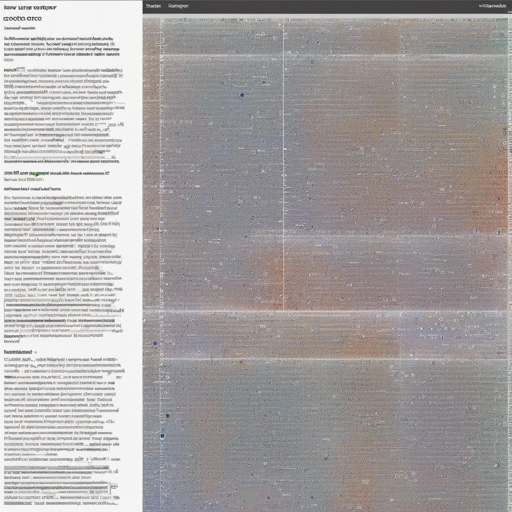In the era of artificial intelligence, understanding the nuances of language and similarity between sentences is paramount for creating intelligent systems. Today, we’ll explore how to use the densely encoded msmarco-bert-base-word2vec256k model to derive sentence embeddings, enabling various natural language processing tasks.
Understanding the Model
The dense encoder model is akin to a sophisticated translator. Imagine you have a library full of sentences (or books), and you want to find the ones that convey similar ideas. This model takes a sentence and transforms it into a 768-dimensional vector, which embodies its meaning and context within a huge mathematical space. It’s like summarizing the essence of sentences into a specific code that retains their meaning while allowing the computer to analyze and compare them effectively.
Installation Steps
First, ensure you have the sentence-transformers library installed. Here’s how you can do that:
- Open your terminal or command prompt.
- Run the following command:
pip install -U sentence-transformersUsing the Sentence-Transformers Library
Once installed, you can easily get started by using the following code:
from sentence_transformers import SentenceTransformer
# Our example sentences
sentences = ["This is an example sentence", "Each sentence is converted"]
# Load the model
model = SentenceTransformer('msmarco-bert-base-word2vec256k')
# Compute embeddings
embeddings = model.encode(sentences)
print(embeddings)Using HuggingFace Transformers
If you prefer using the HuggingFace Transformers library without sentence-transformers, follow these steps:
from transformers import AutoTokenizer, AutoModel
import torch
# Define mean pooling function
def mean_pooling(model_output, attention_mask):
token_embeddings = model_output[0] # First element of model_output contains all token embeddings
input_mask_expanded = attention_mask.unsqueeze(-1).expand(token_embeddings.size()).float()
return torch.sum(token_embeddings * input_mask_expanded, 1) / torch.clamp(input_mask_expanded.sum(1), min=1e-9)
# Define sentences
sentences = ["This is an example sentence", "Each sentence is converted"]
# Load model from HuggingFace Hub
tokenizer = AutoTokenizer.from_pretrained('msmarco-bert-base-word2vec256k')
model = AutoModel.from_pretrained('msmarco-bert-base-word2vec256k')
# Tokenize sentences
encoded_input = tokenizer(sentences, padding=True, truncation=True, return_tensors='pt')
# Compute token embeddings
with torch.no_grad():
model_output = model(**encoded_input)
# Perform pooling
sentence_embeddings = mean_pooling(model_output, encoded_input['attention_mask'])
print("Sentence embeddings:")
print(sentence_embeddings)Performance Evaluation
The model has demonstrated excellent performance benchmarks on datasets like MS MARCO and TREC. Specifically, it achieved:
- TREC-DL 2019: 67.56 (nDCG@10)
- TREC-DL 2020: 71.26 (nDCG@10)
Troubleshooting
If you encounter issues during installation or while running the code, consider the following troubleshooting tips:
- Ensure your Python environment has
torchinstalled. You can install it viapip install torch. - Double-check if you are using the correct model name in the code when instantiating the SentenceTransformer or AutoModel.
- Review any error messages closely for clues on what’s wrong, whether it be version mismatches or missing dependencies.
For more insights, updates, or to collaborate on AI development projects, stay connected with fxis.ai.
Conclusion
This guide walks you through leveraging the msmarco-bert-base-word2vec256k model for enhancing sentence similarity computations. Whether you’re using the sentence-transformers library or HuggingFace Transformers, you can seamlessly encode sentences into powerful vectors. This capability is essential for applications like semantic search and clustering.
At fxis.ai, we believe that such advancements are crucial for the future of AI, as they enable more comprehensive and effective solutions. Our team is continually exploring new methodologies to push the envelope in artificial intelligence, ensuring that our clients benefit from the latest technological innovations.

